You guys asked for them, you gottem! Now, I got tired of freezing my arse off so i didnt get it as clean as i'd liked for ya guys
Now seen apart, the CP3 is a very intresting piece of equipment! One might think its a very complicated deal inside...Well....Its not! Its really so simple its stupid, very very precise, but simple! The whole cylinder housing seems to be made of forged steel and is Extremelly hard and dense! I went to mark the cylinder banks to keep coresponding parts as such, now i went to centerpunch numbers and it laughed at my punch and killed it! It ate my rotary burr i tried to scribe it with too!:rofl: The "crank" is more or less an eccentric and the "rotor" moves radialy but dosen't spin. The elements consist of a cup, spring and the pump piston. The cup rides against the rotor and the spring pushes the cup against the rotor and the piston basically rides free with the incoming fuel at pressure forcing it down. Now the pump displacment variability comes from the how much fuel is let in, by the FCA and that determines how far the piston draws down full of fuel, think as if it were a syringe. Now the fuel comes in via the small little valve plate that sits on the top of the cylinder bore, kinda like a cylinder head! It has a tiny little valve and spring in the center much like a valve in a regular cylinder head! Now as the piston is forced down from fuel incoming the valve plate, the fuel forces that valve open, a small one-way unit if you will. As the crank/rotor compresses the piston compressing fuel creating rail pressure and forces it out an exhaust port at the top of the cylinder below the valve plate! Now as the compressed fuel exhausts out the port, it passes by a check valve that keeps the hi-psi fuel from returning! The center crankshaft also has a drive end that protrudes from the opposite end of the pump housing that runs the gear pump. This pump on an unmodified truck draws the fuel from the tank to itself and pressurizes it and sends it through the fuel inlet circutry. The FCA or Fuel Control Actuator is the next in line, limiting the amount of fuel the cylinders can draw in. As you can see, the pistons are tiny, bout the size of abe's head on that penny!Thats its operation! (I think )
)
Now unfortunaly this ones a wounded soldier, the very bottom element was scored up. Now when i rotated it around i heared an intermittant "snap" sound, which was the siezing element snaping back down against the crank. I suppose, on the truck it was hanging in its bore and basically becoming a 2-cyl pump, hence low rail psi....etc. Now i can only speculate that beeings the failed element was the very bottom one and fairly dirty, that contaminates got in the bore and tore it up? Could be a number of other causes aswell.
You can see the one piston is scored and heat discolored.
Some of my ideas and opinions...
I can see how one wouldn't want to "over-rev" one of these pumps, think just as a regular engine encounters valve float. Now this pump has mechanical springs that have inclination to float just as any would when exceeding its RPM rate, now it does have fuel to help force the piston down but just like PW on the injectors, theres only so much time to get fuel in the cylinders! Now i can see how more fuel inlet psi could be advantagous to hi-rpm function, and why couldn't a heavier cup spring be employed? The stock ones don't seem all that stout givin the cyclic rate it could see?
So enjoy, add to, correct me, ask? :hug: Its sure intresting!
Now seen apart, the CP3 is a very intresting piece of equipment! One might think its a very complicated deal inside...Well....Its not! Its really so simple its stupid, very very precise, but simple! The whole cylinder housing seems to be made of forged steel and is Extremelly hard and dense! I went to mark the cylinder banks to keep coresponding parts as such, now i went to centerpunch numbers and it laughed at my punch and killed it! It ate my rotary burr i tried to scribe it with too!:rofl: The "crank" is more or less an eccentric and the "rotor" moves radialy but dosen't spin. The elements consist of a cup, spring and the pump piston. The cup rides against the rotor and the spring pushes the cup against the rotor and the piston basically rides free with the incoming fuel at pressure forcing it down. Now the pump displacment variability comes from the how much fuel is let in, by the FCA and that determines how far the piston draws down full of fuel, think as if it were a syringe. Now the fuel comes in via the small little valve plate that sits on the top of the cylinder bore, kinda like a cylinder head! It has a tiny little valve and spring in the center much like a valve in a regular cylinder head! Now as the piston is forced down from fuel incoming the valve plate, the fuel forces that valve open, a small one-way unit if you will. As the crank/rotor compresses the piston compressing fuel creating rail pressure and forces it out an exhaust port at the top of the cylinder below the valve plate! Now as the compressed fuel exhausts out the port, it passes by a check valve that keeps the hi-psi fuel from returning! The center crankshaft also has a drive end that protrudes from the opposite end of the pump housing that runs the gear pump. This pump on an unmodified truck draws the fuel from the tank to itself and pressurizes it and sends it through the fuel inlet circutry. The FCA or Fuel Control Actuator is the next in line, limiting the amount of fuel the cylinders can draw in. As you can see, the pistons are tiny, bout the size of abe's head on that penny!Thats its operation! (I think
Now unfortunaly this ones a wounded soldier, the very bottom element was scored up. Now when i rotated it around i heared an intermittant "snap" sound, which was the siezing element snaping back down against the crank. I suppose, on the truck it was hanging in its bore and basically becoming a 2-cyl pump, hence low rail psi....etc. Now i can only speculate that beeings the failed element was the very bottom one and fairly dirty, that contaminates got in the bore and tore it up? Could be a number of other causes aswell.
You can see the one piston is scored and heat discolored.
Some of my ideas and opinions...
I can see how one wouldn't want to "over-rev" one of these pumps, think just as a regular engine encounters valve float. Now this pump has mechanical springs that have inclination to float just as any would when exceeding its RPM rate, now it does have fuel to help force the piston down but just like PW on the injectors, theres only so much time to get fuel in the cylinders! Now i can see how more fuel inlet psi could be advantagous to hi-rpm function, and why couldn't a heavier cup spring be employed? The stock ones don't seem all that stout givin the cyclic rate it could see?
So enjoy, add to, correct me, ask? :hug: Its sure intresting!
Attachments
-
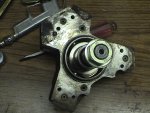 DSC00569.JPG124.9 KB · Views: 248
DSC00569.JPG124.9 KB · Views: 248 -
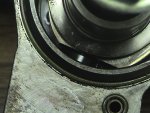 DSC00570.JPG130.1 KB · Views: 229
DSC00570.JPG130.1 KB · Views: 229 -
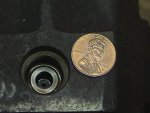 DSC00571.JPG151.4 KB · Views: 225
DSC00571.JPG151.4 KB · Views: 225 -
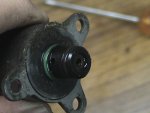 DSC00572.JPG145 KB · Views: 217
DSC00572.JPG145 KB · Views: 217 -
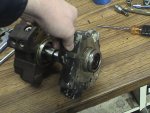 DSC00573.JPG132.4 KB · Views: 222
DSC00573.JPG132.4 KB · Views: 222 -
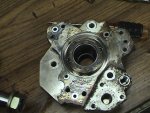 DSC00574.JPG134.8 KB · Views: 209
DSC00574.JPG134.8 KB · Views: 209 -
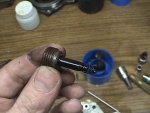 DSC00575.JPG110.5 KB · Views: 209
DSC00575.JPG110.5 KB · Views: 209 -
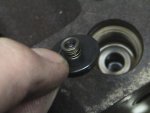 DSC00576.JPG138.5 KB · Views: 201
DSC00576.JPG138.5 KB · Views: 201 -
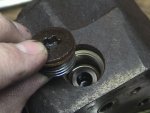 DSC00577.JPG112.7 KB · Views: 194
DSC00577.JPG112.7 KB · Views: 194 -
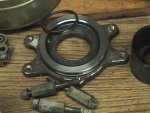 DSC00578.JPG134.9 KB · Views: 194
DSC00578.JPG134.9 KB · Views: 194 -
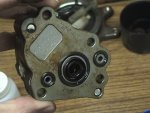 DSC00579.JPG113.7 KB · Views: 189
DSC00579.JPG113.7 KB · Views: 189 -
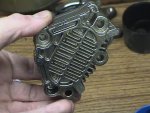 DSC00580.JPG129 KB · Views: 192
DSC00580.JPG129 KB · Views: 192 -
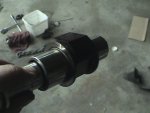 DSC00581.JPG141.7 KB · Views: 189
DSC00581.JPG141.7 KB · Views: 189 -
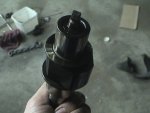 DSC00582.JPG141.7 KB · Views: 188
DSC00582.JPG141.7 KB · Views: 188 -
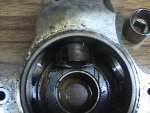 DSC00583.JPG133.9 KB · Views: 201
DSC00583.JPG133.9 KB · Views: 201 -
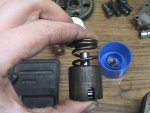 DSC00584.JPG112.6 KB · Views: 188
DSC00584.JPG112.6 KB · Views: 188 -
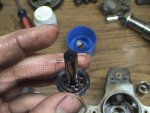 DSC00586.JPG115 KB · Views: 174
DSC00586.JPG115 KB · Views: 174 -
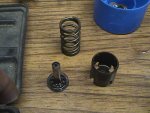 DSC00587.JPG134.2 KB · Views: 164
DSC00587.JPG134.2 KB · Views: 164 -
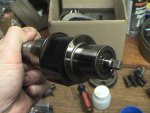 DSC00588.JPG107.8 KB · Views: 173
DSC00588.JPG107.8 KB · Views: 173 -
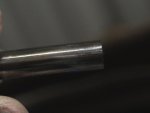 DSC00590.JPG110.1 KB · Views: 164
DSC00590.JPG110.1 KB · Views: 164 -
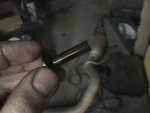 DSC00589.JPG128.3 KB · Views: 158
DSC00589.JPG128.3 KB · Views: 158 -
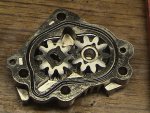 DSC00591.JPG128.3 KB · Views: 200
DSC00591.JPG128.3 KB · Views: 200 -
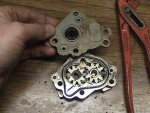 DSC00593.JPG128.3 KB · Views: 165
DSC00593.JPG128.3 KB · Views: 165

